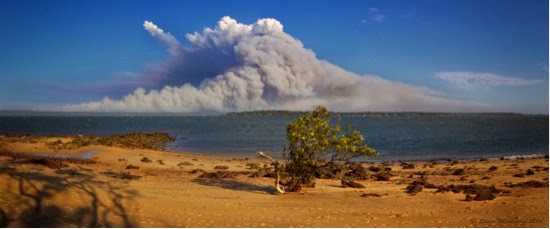Motorized traffic severely impacts beach birds
A recent scientific study undertaken on Fraser Island found that motorized traffic is the prime agent of disturbance to birds on ocean beaches.
Below is the abstract from the paper ‘’Human recreation alters behaviour profiles of non-breeding birds on open-coast sandy shores’’ By Schlacher, TA; Nielsen, T; Weston, MA. Published in ESTUARINE COASTAL AND SHELF SCIENCE (Volume: 118 Pages: 31-42 FEB 10 2013.)
Sandy beaches are primarily valued for their amenity and property values rather than for their ecological functions and properties. Some human usage of beaches potentially conflicts with the conservation and management of wildlife, such as beach-dwelling birds, on sandy shorelines. Because responses by birds to environmental change, including disturbance by humans, often involve behaviours that carry fitness costs, we quantify behaviour profiles of birds in relation to human occurrence along 200 km of sandy shoreline in Eastern Australia, including the large conservation area of Fraser Island. Disturbance to birds on these shores was considerable: 1) birds encountered motorized vehicles (cars, trucks, buses etc.) during 80% of focal bird observation bouts, 2) birds were flushed in over half (up to 86% in individual species) of all bouts, and 3) individuals spent, on average, one-third of their time on disturbance-related behaviours; this was particularly prevalent for Crested Terns (Thalasseus bergii) which were alert 42% of the time and spent 12% of their time escaping from human stimuli.
Overall, this study demonstrated that motorized traffic is the prime agent of disturbance to birds on these beaches, resulting in frequent and time-consuming escape behaviours. These findings also emphasize that management of vehicle-based recreation on beaches needs to be re-aligned to meet conservation requirements in addition to providing leisure opportunities in National Parks and beyond; we identify some salient issue for this development:
Overall, this study demonstrated that motorized traffic is the prime agent of disturbance to birds on these beaches, resulting in frequent and time-consuming escape behaviours. These findings also emphasize that management of vehicle-based recreation on beaches needs to be re-aligned to meet conservation requirements in addition to providing leisure opportunities in National Parks and beyond; we identify some salient issue for this development:
- encouragement of social norms that promote environmentally benign beach use not involving motor vehicles
- creation of spatial refuges for beach wildlife from traffic and other non-compatible uses, and
- investment in developing complementary management actions such as effective set-back distances.
A full copy of the paper is available from Mary Barram (mbarram@bigpond.com).

